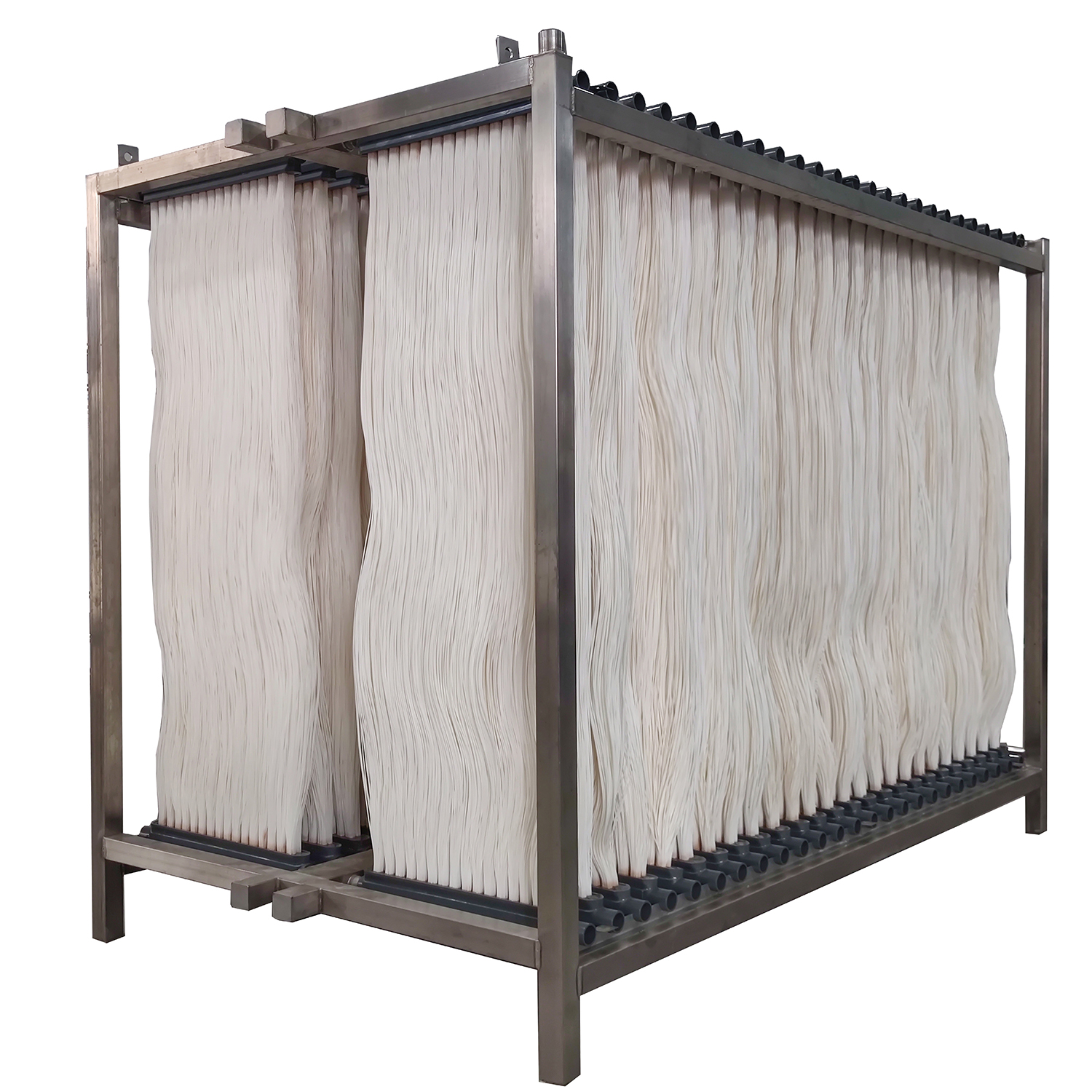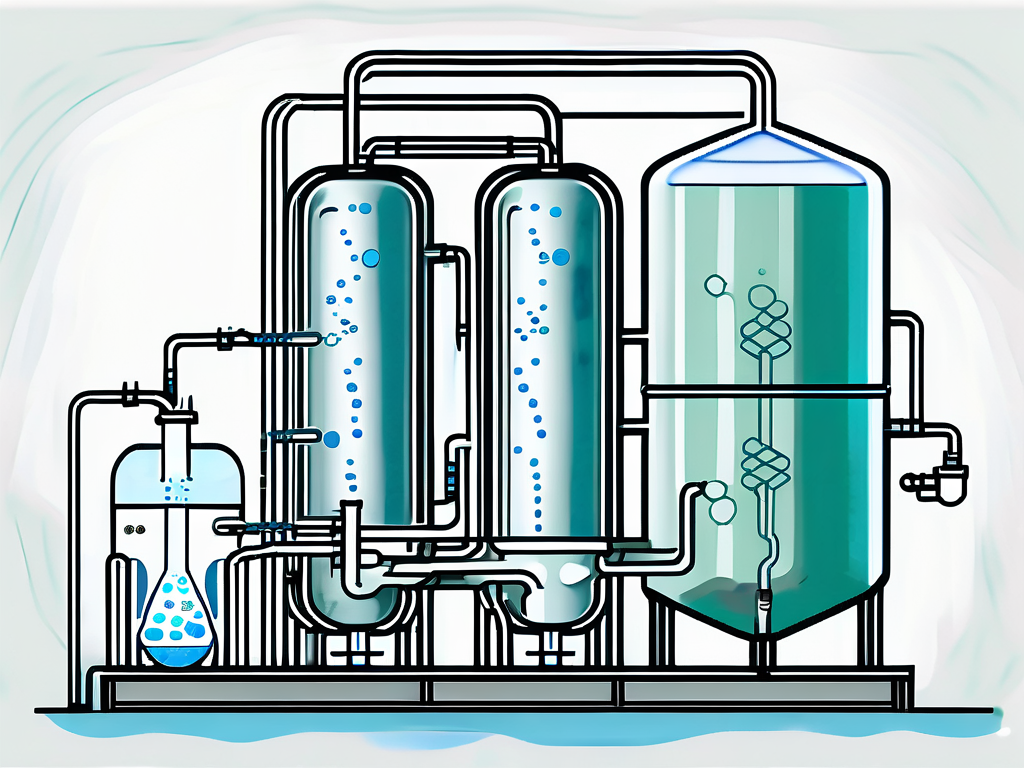Troubleshooting Common Issues with Membrane Bioreactor Systems
Membrane Bioreactors Explained: Efficient Solutions for Tidy Water
Membrane layer bioreactors (MBRs) have actually arised as a sophisticated option for dealing with journalism challenges of wastewater therapy. By integrating biological processes with innovative membrane layer filtering, MBRs not just improve the high quality of cured water however additionally minimize the spatial needs of therapy centers. As ecological issues heighten, the role of MBR technology in promoting lasting water monitoring ends up being significantly substantial. The intricacies of their operation, benefits, and prospective applications merit a closer assessment to totally comprehend their influence on the future of water treatment.

What Are Membrane Bioreactors?
Membrane bioreactors (MBRs) are innovative wastewater therapy systems that combine biological degradation processes with membrane filtering innovation. This combination enables for the efficient elimination of impurities from water, making MBRs a recommended selection in numerous applications, including municipal wastewater therapy and commercial effluent administration.

Among the critical advantages of MBRs is their ability to generate top quality effluent, commonly ideal for reuse in watering or industrial procedures. In addition, MBRs call for a smaller footprint contrasted to traditional therapy systems, making them excellent for city settings where room may be limited.
In addition, MBRs can efficiently manage differing influent lots and are much less vulnerable to the effects of toxic shocks. These qualities add to their expanding appeal as a lasting solution for dealing with the raising need for tidy water while decreasing environmental effects.
Just How Membrane Layer Bioreactors Job
While the procedure of membrane bioreactors (MBRs) may appear facility, it basically focuses on the harmony between organic procedures and membrane filtering. MBRs incorporate a biological treatment procedure, typically turned on sludge, with a membrane layer splitting up system to deal with wastewater effectively.
In an MBR system, wastewater is very first introduced into a bioreactor where bacteria weaken raw material and other impurities. The organic activity reduces the focus of contaminants while promoting the development of biomass. Following this organic therapy, the blended liquor is subjected to membrane filtering, which can be microfiltration or ultrafiltration, depending upon the wanted effluent quality.
The membranes function as a physical obstacle, allowing water and tiny solutes to pass while preserving put on hold solids and larger molecules. This enables the system to maintain a high concentration of biomass within the activator, improving the treatment efficiency.
Moreover, the continual splitting up of treated water from the biomass assists in a small design and decreases the impact of the therapy facility. On the whole, the combination of biological degradation and membrane layer purification in MBRs leads to reliable and trusted wastewater therapy, making certain top quality effluent suitable for different applications.
Benefits of MBR Technology
Among the crucial benefits of membrane bioreactor (MBR) innovation is its capability to generate top quality effluent with a significantly reduced impact compared to standard wastewater therapy techniques. MBR systems successfully integrate biological treatment and membrane layer purification, causing superior elimination of contaminants, including put on hold solids, microorganisms, and natural issue. This capacity leads to effluent that typically meets or surpasses rigid regulatory standards for reuse and discharge.
Furthermore, MBR technology enables greater biomass focus, which improves the treatment effectiveness and reduces the required activator volume. This portable design is specifically useful in metropolitan locations where room is limited. The operational versatility of MBR systems also suggests they can adapt to differing influent top qualities and flow rates, making them suitable for a variety of applications.
Moreover, the reduced sludge manufacturing associated with MBR processes adds to reduce operational and maintenance expenses. The membrane layers serve as a physical barrier, lessening the threat of obstructing and enabling longer operational durations between cleansing. Generally, the benefits of MBR modern technology make it an appealing service for sustainable wastewater therapy, resolving both ecological problems and the demand for efficient resource monitoring.
Applications of Membrane Layer Bioreactors
With their flexibility and performance, membrane layer bioreactors (MBRs) Check This Out find applications throughout various industries, consisting of community wastewater treatment, industrial processes, and even water improvement. In community settings, MBRs supply a compact remedy for dealing with wastewater, properly removing impurities while all at once creating high-quality effluent that satisfies rigid governing standards. This makes them especially appropriate for areas with minimal space.
In commercial applications, MBR modern technology is used for treating procedure water, particularly in sectors such as food and drink, drugs, and petrochemicals. These industries benefit from MBRs' capability to take care of high natural tons and their performance in recuperating useful resources from wastewater, such as nutrients and water.
Furthermore, MBRs play a critical duty my latest blog post in water reclamation initiatives, making it possible for the reuse of treated wastewater for irrigation, commercial processes, or also as drinkable water after more treatment (Membrane Bioreactor). Their effectiveness in getting rid of virus and toxins makes them a reliable selection for guaranteeing water top quality in different reuse applications
Future of Water Therapy Solutions
The future of water therapy remedies is poised for transformative developments driven by technical development and raising ecological awareness. As worldwide water shortage comes to be a pushing concern, brand-new approaches, including membrane layer bioreactor (MBR) systems, are readied to play an essential function in boosting the performance and sustainability of water therapy processes.
Arising modern technologies such as expert system and machine knowing are expected to enhance therapy procedures, enabling for real-time monitoring and predictive upkeep. This will certainly boost the general integrity and performance of water therapy facilities. Improvements in membrane layer products, such as graphene and nanofiltration, guarantee to raise permeation prices and reduce fouling, click for info leading to reduced power intake and operational costs.
In addition, the integration of sustainable energy resources into water therapy plants will add to greener techniques. The circular economic situation version will likewise acquire grip, urging the healing of useful resources from wastewater, such as nutrients and energy.
Conclusion

Membrane layer bioreactors (MBRs) have actually emerged as an innovative solution for dealing with the pushing obstacles of wastewater therapy. By incorporating biological procedures with sophisticated membrane layer filtration, MBRs not just boost the high quality of treated water but likewise decrease the spatial requirements of treatment facilities.One of the key advantages of membrane bioreactor (MBR) technology is its capability to produce premium effluent with a dramatically lowered footprint contrasted to conventional wastewater treatment approaches.With their adaptability and effectiveness, membrane bioreactors (MBRs) discover applications throughout different markets, consisting of municipal wastewater therapy, industrial processes, and even water recovery.In final thought, membrane layer bioreactors stand for a substantial innovation in wastewater therapy technology, integrating biological processes with efficient membrane filtration to produce top quality effluent.